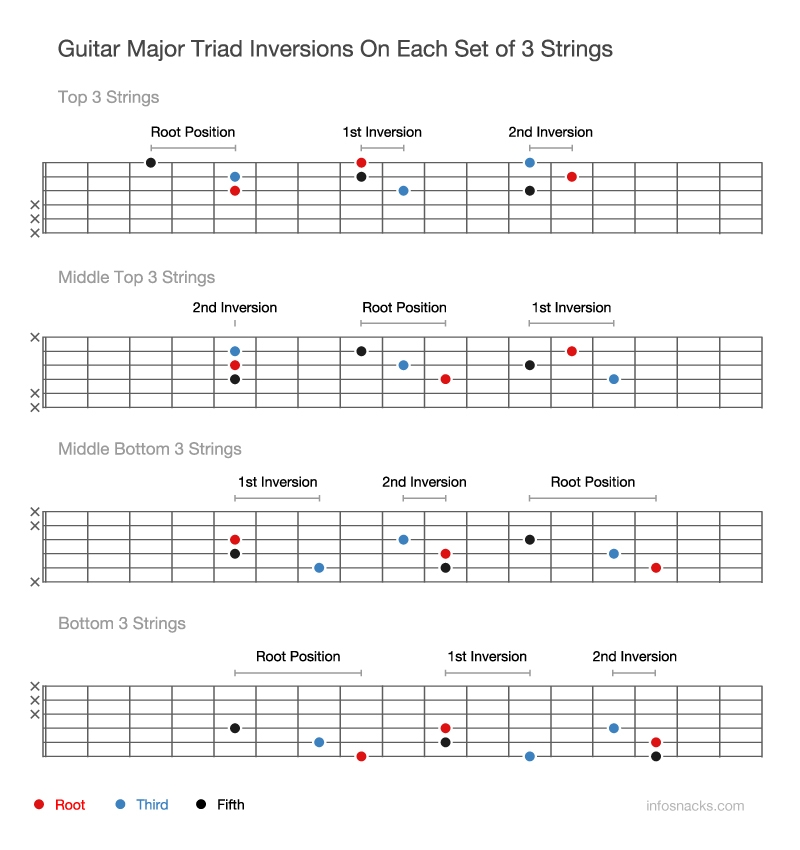Guitar Major Triad Inversions
Typically guitar chords are played as five or six note bar chords or open guitar chords at the neck. But guitar chords can also commonly be played as three note triads. This requires the guitarist to mute the three unplayed strings with his or her remaining fingers on the fretting hand.
The major triads can be played on any of the four sets of three strings, but each set of strings require the guitarist to learn different fingering. On each set of strings the triad can be played in three different places, as different inversions, across the first 12 frets. After the 12th fret the pattern repeats.
The chart below shows all the basic major guitar triads and their first and second inversions.

Comments